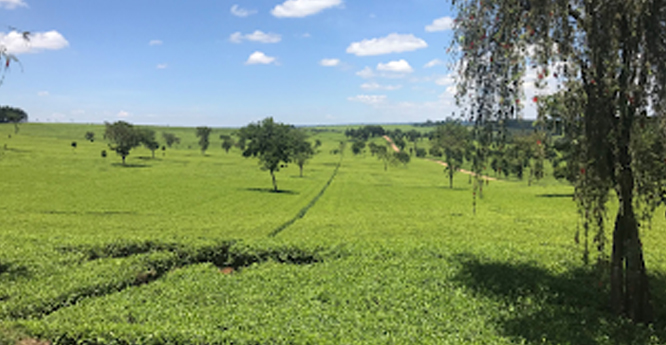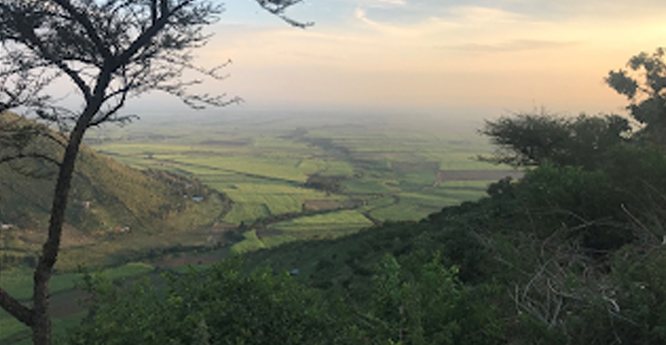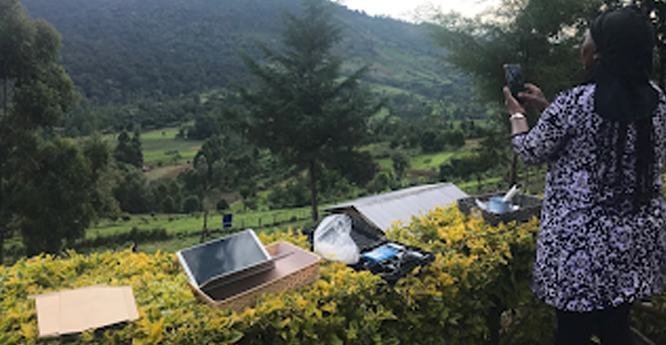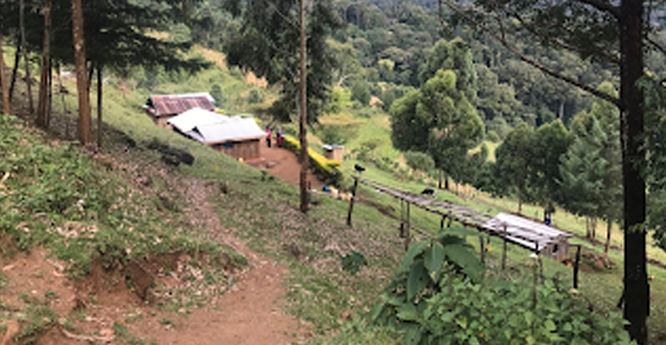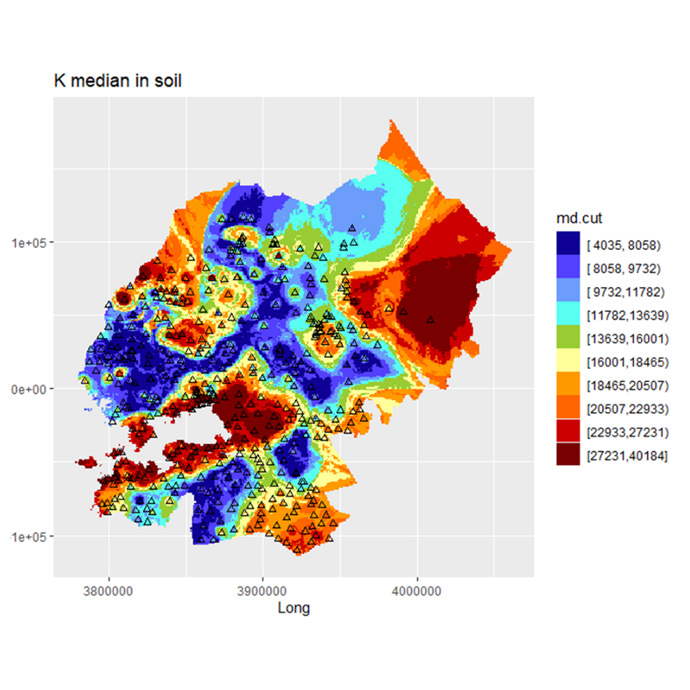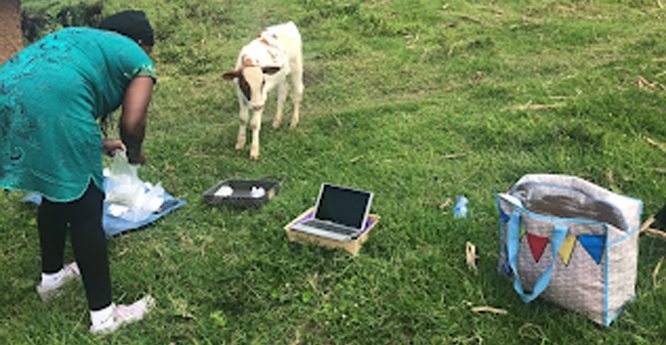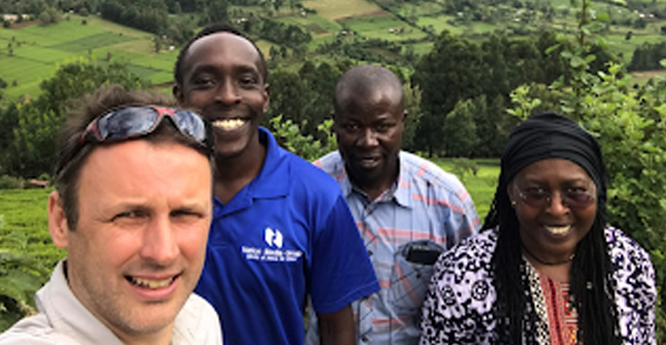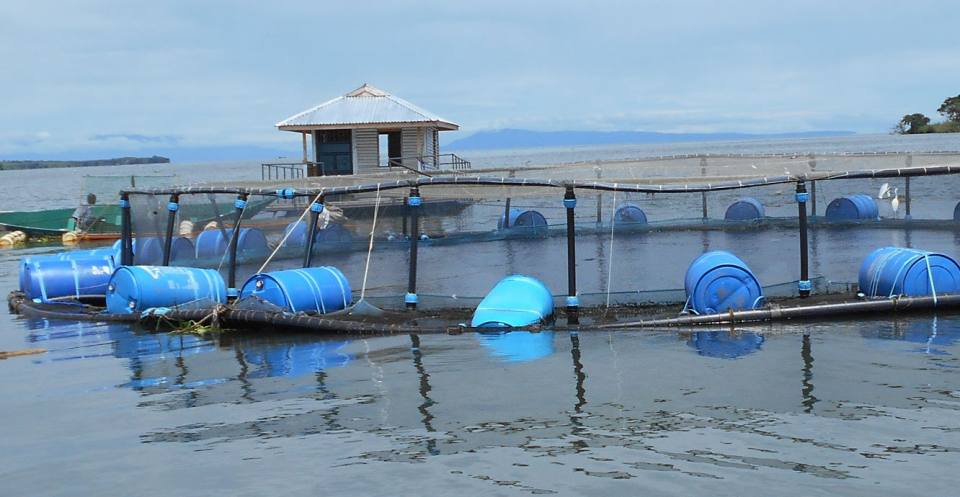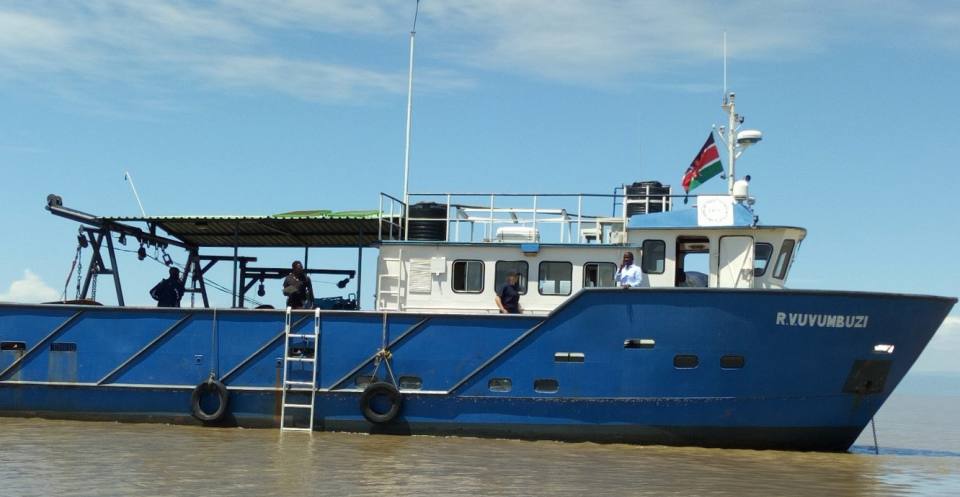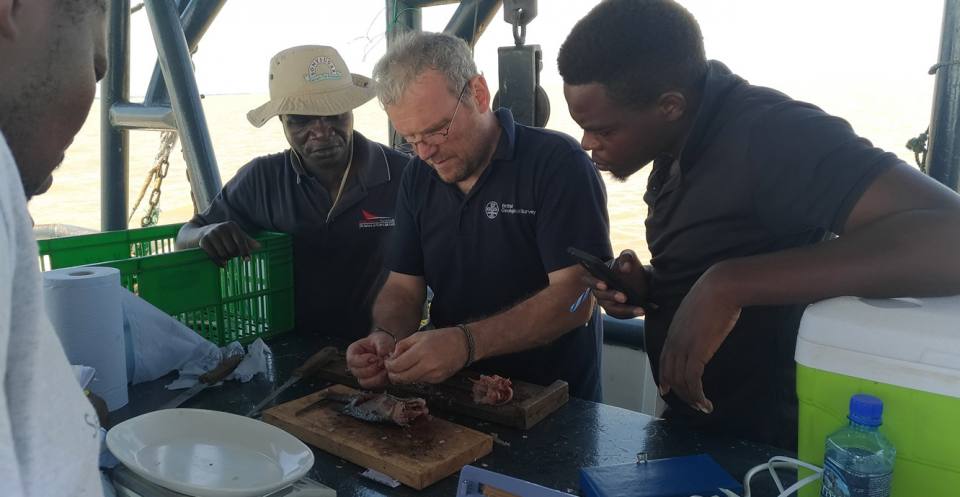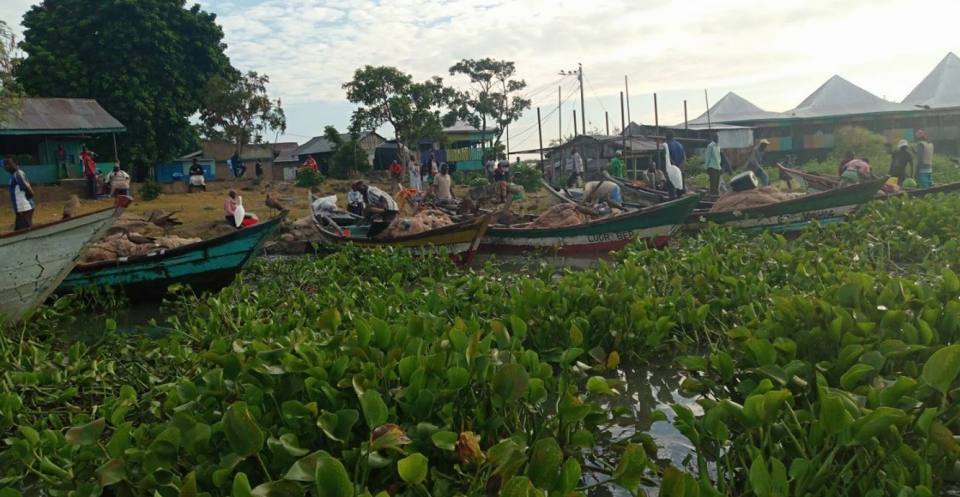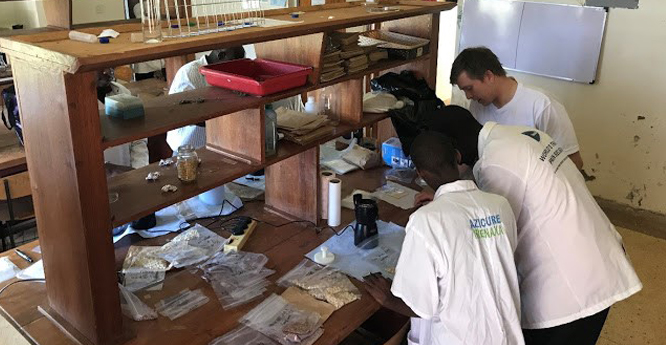In November 2019, the inorganic geochemistry team within the Centre for Environmental Geochemistry (CEG), along with partners from Moi University and the University of Eldoret (UoE), completed a sixth round of environmental and human biomonitoring sampling in west Kenya. Locations ranged from the tea estates in Nandi Hills and Kericho, through the sugar cane belt across Kisumu County down to Homa Bay County, covering diverse communities, landscape and climatic conditions spanning the Winam Gulf catchment of Nam Lolwe (Lake Victoria).
This study started back in 2016, joining research led by Dr Diana Menya at Moi University (CNN article) and Dr Valerie McCormack from the International Agency for Research on Cancer (IARC), who studied the high incidence of oesophageal squamous cell carcinoma (ESCC) in the western part of Kenya, including the Great Rift Valley region. ESCC is the eighth most common cancer by incidence worldwide and, in Kenya, it is the most common cancer in men and the third most common in women.
Initially, the environmental survey was targeted at complementing a case-control study being conducted by Moi-IARC in several counties around Eldoret to provide a measure of environmental and dietary factors alongside various causal factors under investigation — consumption of a high-ethanol traditional alcoholic brew called chang’aa or ‘kill me quick’, cigarette smoking and hot tea drinking — but they are unlikely to fully explain the burden (McCormack et al., 2015).
Essentially, this project set out to demonstrate the value of cross-disciplinary collaboration between epidemiologists, health practitioners, biostatisticians, geochemists, farmers and local agricultural extension workers. A great deal of interest was created amongst the communities who welcomed the research and could provide useful local knowledge with respect to farming and local health issues.
Environmental sampling
Over the past three years, with support from the BGS-ODA programme and CEG, the targets have widened from a focus on ESCC to collect urine samples and environmental samples to provide a simple measure of population-level health status for micronutrients essential to health (e.g. iodine; selenium) and potentially harmful elements (e.g. arsenic; chromium).
Additional information, such as usage, reliability and source data, is being collected, as well as drinking water data that will supplement drinking water-supply data from teams working across Africa (led by Alan MacDonald) to facilitate the integration of datasets from multiple BGS projects. Summary reports for drinking water and urinary data will be provided to public health collaborators within each county.
Training and sharing of facilities
Training was a key theme of the overall project, both for environmental/laboratory scientists from UoE/Moi and public-health officers (PHO) from each County Ministry of Health, to improve local capacity and build long-term partnerships to open access to funding opportunities.
Overall, quality-assurance processes were prioritised, from the point of planning sample collection, through collection of data and samples in the field, to their preservation and maintenance of their integrity until they were returned to the laboratory at UoE or the BGS for analysis. Ensuring a traceable audit trail, from collection to reporting of data, enabled reliable interpretation of data by local Ministry of Agriculture extension services, PHOs and when the team published in peer-reviewed literature (Watts et al., 2019a; Watts et al., 2019b).
Ultimately, the training approach and sharing of laboratory equipment from the BGS and other UK research partners will help in the teaching activities at UoE, which themselves help develop local laboratory capability and systems to provide confidence in data output.
This has been and continues to be supported by Commonwealth Scholarship Council-UK Professional Fellowships, which have facilitated visits to the BGS for up to three months. The training in field and laboratory activities has allowed us to scale-up field collections cost-effectively, increasing efficiencies and, more importantly, to forge strong partnerships to identify follow-on priorities.
Training in both directions has also been a key feature, with BUFI PhD students Olivier Humphrey (now a BGS employee) and Sophia Dowell building their own research capacity and networks through field operations and shared learning.
What did we collect?
At each site, a small team of BGS and UoE participants captured on field sheets a range of data relating to the land use, crops grown, drinking water source/usage and any local health problems (e.g. ESCC; goitre) along with soil, a panel of crops grown and eaten from the garden or farm, drinking water and a urine sample. The latter often resulted in some giggling but nearly always enthusiastic participation, despite the potential embarrassment! We had three vehicles out in the field on predetermined routes to coordinate daily collections, often at difficult to reach places, but thankfully the weather held and many roads, although difficult, were passable.
This work could not have been done without the PHOs (and often the drivers helping too) explaining what we were doing and why, in order to gain permission from participants at each site: this can often result in a deluge of local information. In fact, we rarely experienced a negative response but rather a great deal of interest and help. The challenge was how to report data back in an appropriate format to be accessible to all stakeholders.
Wider uses for data
Rather than being led by the location of ESCC case-control sites, collection changed so that sampling was targeted to provide spatial coverage geographically and across different types of soil, focusing on rural communities that consume their own produce. Overall, the data will be useful to agricultural extension officers to provide advice to farmers on soil management and to PHOs in gaining datasets to estimate health status from a sample population within each county (e.g. micronutrient deficiencies; exposure to potentially harmful elements).
In the coming years, IARC-Moi University will use the environmental data and predicted dietary supply to support sampling for ESCC-control collection points, utilising the trained field personnel developed through this collaboration.
Environmental data is being prepared for stakeholders to provide an easy-to-use web tool to deliver, use and supplement data, for example delivery of soil and crop geochemistry data for agricultural extension workers and farmers to provide a spatial prediction of soil geochemistry across the Winam gulf catchment. Figure 1 shows an example for potassium. There is plenty of work required to develop a web tool to deliver data in an understandable format, with co-design from stakeholders.
Other research
In parallel, Andy Marriott has formed a partnership with UoE and the Kenya Marine Fisheries Research Institute (KMFRI), supported by Newton Prize funding and the BGS-ODA programme, to develop a framework to deliver fish and environmental data to stakeholders to facilitate monitoring and regulation of lake inputs and appropriate and sustainable placement of aquaculture cages. Aquaculture is increasingly important regionally for the creation of livelihoods and satisfying food security.
Overall, data from all of this geochemistry and health research has enabled the development of other projects and expanded the collaborative network with the BGS, UoE, Moi University, KMFRI and University of Nottingham. Opportunities include:
- pollution pathways from land-to-lake
- soil erosion/land-use and subsequent impact on agricultural productivity
- fisheries/aquatic ecosystem health and the consequences for consumers of agricultural and fishery produce
This follow-on work is supported by a Royal Society International Collaboration grant and the BGS-ODA programme, alongside a NERC ARIES DTP PhD studentship to Sophia Dowell with the University of Plymouth and another one with the Nelson Mandela Agricultural Institute of Science and Technology (NM-AIST – Tanzania).
Efforts to develop project partnerships and two-way exchanges of staff and students has been recognised in MOUs being discussed to consolidate on the research, partnership and friendships built so far. I say friendships, because whilst we all recognise the value of what we are doing, the long days in the field on bumpy and dusty roads, boat work on choppy lake waters and storms above, plans not always surviving intact, the shared experience of tiredness and sometimes frustration is always backed up by lots of laughter – which is what we take with us when leaving Kenya. We look forward to a return to fieldwork and workshops with our partners in Kenya in a post COVID-19 world, but for now online platforms have facilitated activities to continue progress, albeit with a slightly different emphasis on data outputs and remote working for everyone (e.g. SEGH Live).
Further information
Dr Michael Watts and Dr Andrew Marriott, Inorganic Geochemistry at the Centre for Environmental Geochemistry at the British Geological Survey.
Partners
Dr Diana Menya is a senior lecturer with the School of Public Health, Moi University, Kenya.
Professor Odipo Osano is from the School of Environmental Sciences, University of Eldoret, Kenya.
Professor Chris Aura is from the Kenyan Marine Fisheries Research Institute (KMFRI), Kisumu, Kenya.
University of Eldoret: Jackson Masai, Charles Owano, David Samoie, Prof. Odipo Osano, Doreen Meso. Many thanks to student volunteers led by Melvine Anyango and Job Isaboke for help in the field and lab
Moi University: Dr Diana Menya, Esilaba Anabwani – ESCCAPE, Eldoret (Esophageal Squamous Cell Carcinoma Africa Prevention Effort), Amimo Anabwani- ESCCAPE, Eldoret
British Geological Survey: Dr Michael Watts, Dr Olivier Humphrey, Sophia Dowell – CEG PhD student, Dr Andy Marriott + IG lab team.
Public Health Officers Many thanks to the PHO’s from Kisumu, Kericho and Nandi Counties, some of whom were volunteer PHO’s serving their community and/or trainees building up work experience.
KMFRI Many thanks to Collins Ongore, and the ship crew on the R Vuvumbusi.
University of Nottingham: Tracey Coffey


